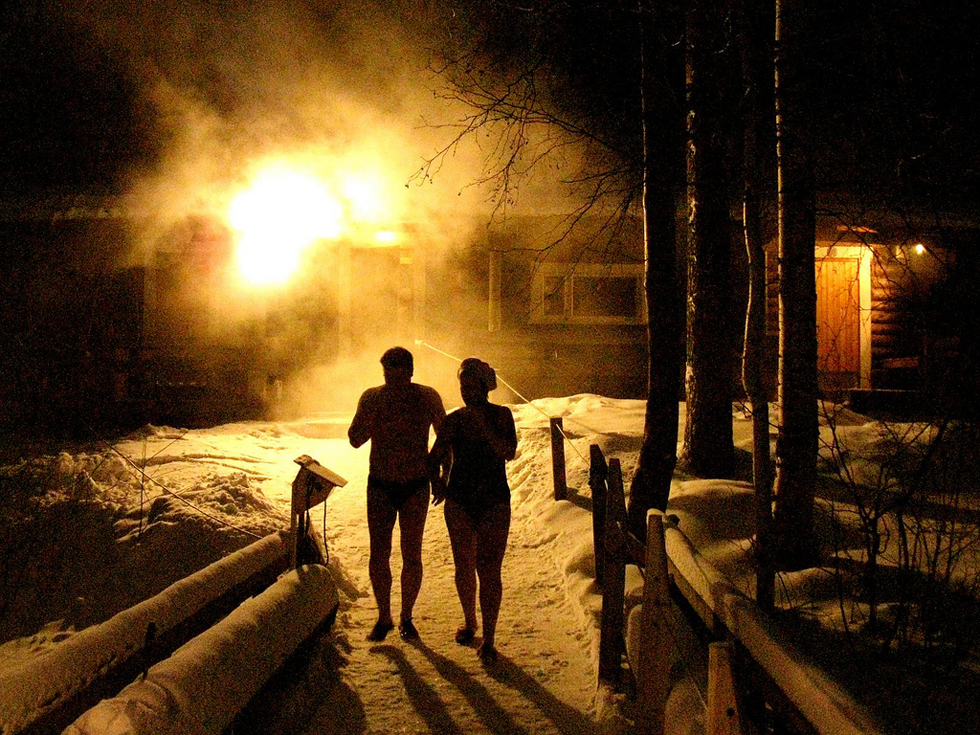
The practice of heating the body in a sauna or sweat lodge and then jumping into a cold stream or snow drift may be as old as the use of fire, but the first civilization to institutionalize the hot and cold water bathing practice of the modern spa was probably the Romans. Their bathhouses played an instrumental role not just in public health and hygiene but in society. Over the years their bathing practices were adopted across Europe and the Middle East, and many ancient Roman baths remain in use today.
The main difference between the hot and cold bathing practice then and now is that we know why it is so good for us – and how to get the most out of it. This quintessential spa experience addresses a wide range of stress-related disorders while naturally promoting the balancing of our autonomic nervous system. As relaxing as it is therapeutic, this hour-long practice is now known as “The Art of Spa. ”
The Art of Spa effectively helps create a more active and responsive internal environment. Put simply, the heat expands the blood vessels and lymph vessels as it open the pores. Then the cold contracts the same vessels and closes the pores. Alternating hot and cold both expands and contracts the vessels like as pump, boosting circulation, and ridding the body of toxins. The practice has been shown to sooth sore muscles, promotes flexibility, improve skin tone, improves digestion, lower blood pressure, elevates metabolic activity, mobilizes white blood cells for enhanced immunity and of course provides deep, restorative relaxation. The endorphin rush from the Art of Spa is also a natural and a completely legal kind of high.
Here’s the Basic Practice
This can be done at any spa with hot and cold amenities such as a whirlpool, sauna, steam room, and cold plunge. If the spa does not have a cold plunge, substitute the cold shower, as described in the third step below.
1. Begin with a shower to remove oils, lotions, and any skin impurities.
2. Enter the steam room or sauna for a period of 5 to 20 minutes. Almost immediately your body will begin to work to stay cool. Your blood vessels will dilate, your heart rate will rise, and you will begin to sweat. A typical rise in pulse is from 60 to 70 beats per minute to 110 or 120. Spa aficionados may stay longer in the heat and their pulse may rise as high as 140 or 150. That is a strenuous workout that requires practice. Be careful not to overheat. Exit
3. Immediately enter the cold plunge or a cold shower for a period of 10 to 60 seconds. The plunge causes blood and lymph vessels to constrict. Exit, and dry off.
4. Rest. Wait until pulse and body temperature return to normal. For the full therapeutic effect, a minimum of 10 minutes relaxation is recommended.
5. Repeat steps 2, 3 and 4 twice. (Note: It is likely that your body will heat up faster with each session. Do not overheat.)
After the last session, make sure you are warm and completely rested before proceeding with your day.
A Few Suggestions
Don’t rehydrate with cold water. Drink room temperature water. Be mindful about drinking alcohol afterward. It may go straight to your head.
Eat fruit to replace minerals lost through perspiration
The Art of Spa is recommended before and after massages and other spa treatments with a few exceptions. The Art of Spa is not recommended after Manual Lymph Drainage or Aromatherapy.
At Home
Simulate your Art of Spa experience by finishing your morning shower with a cold rinse. You will start your day feeling fresh and vital.
Warning
If you have high blood pressure, a heart condition or other medical complications, consult your doctor before practicing the Art of Spa.
Anne Bramham
A respected spa industry mentor, Anne Bramham is the founder of ASTECC (Advanced Spa Therapy Education Certification Council) and an instructor for the Dr. Vodder School of North America. She has introduced ASTECC training to top spa and wellness destinations throughout the U.S., including Montage Resort & Spa, Grand Del Mar, Spa Shiki Four Seasons, and Ritz-Carlton. She resides with her family in South Florida.